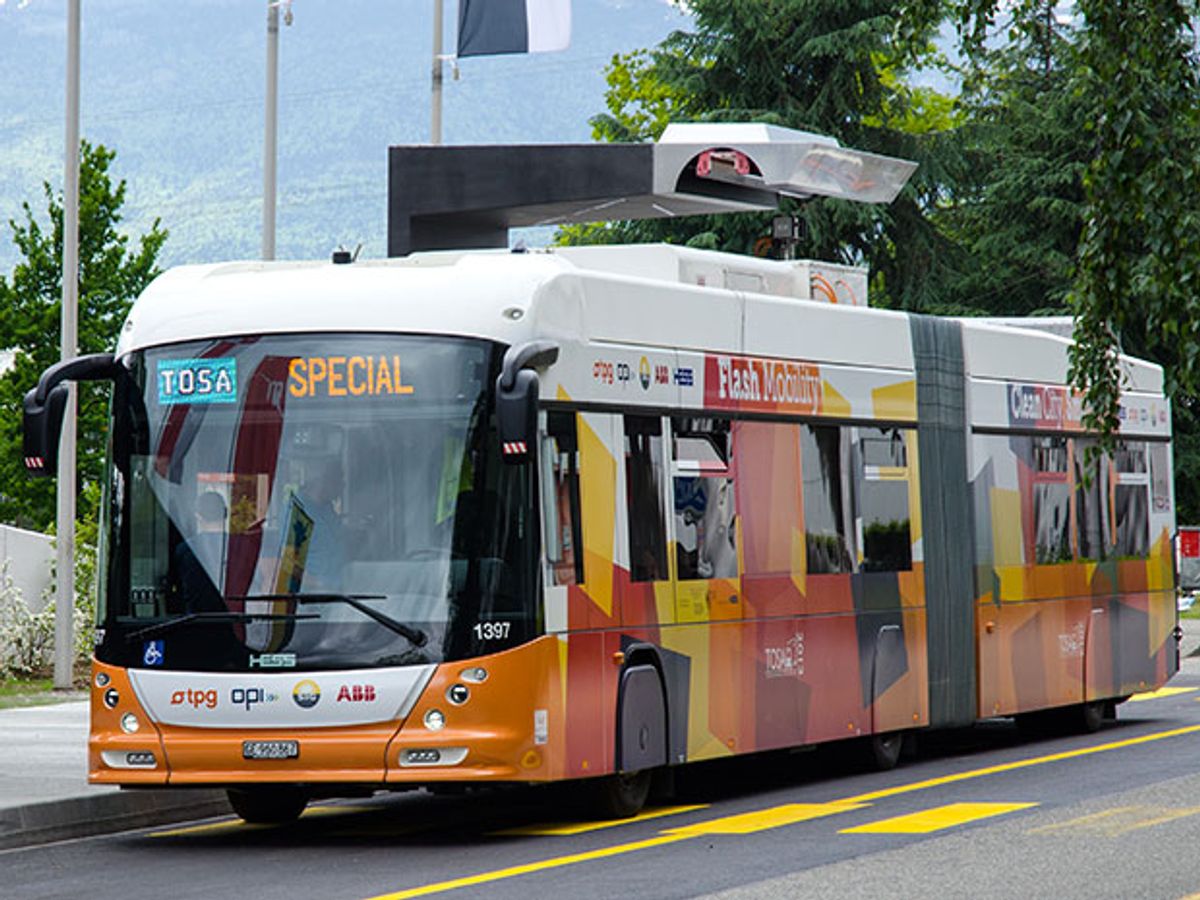People’s eyes glaze over after about one minute spent charging a battery, and that’s bad news for the guys who sell electric vehicles.
So various schemes have been devised to shorten the wait. You can swap in fresh batteries, but that hasn’t taken off. You can add gasoline engines optimized for “range extension,” as it’s called, but that adds moving parts. You can charge as you go, via inductive pads buried in the pavement, but that makes for an expensive roadway.
Now ABB, a Swiss rail and bus company, has another suggestion. In a pilot project in Geneva, it has provided electric buses with quick-charging opportunities. In the 15 seconds that people spend getting on and off the bus the system transfers 2.5 kilowatt-hours—enough to keep the bus on its appointed rounds for another three or four stops. Then it’s time for another quick fix. Only when it reaches the end of the circuit does the bus take the four or five minutes it needs to top off its lithium-ion batteries, which can hold 73 kilowatt-hours.
The demonstration phase has ended, and ABB says it now has a commercial contract: A complete line with a full fleet of buses will operate on one of Geneva’s main routes. The company hopes to sell the technology to clients around the world.
“Obtaining adequate power for this purpose from the grid can be a challenge,” according to Jean-Luc Favre, who heads ABB’s global rail business. “We address this at the flash stations by trickle charging [the station's] batteries, which are an integral part of the station. Then, when the bus arrives, power is drawn from the flash batteries to the bus batteries, avoiding peaks on the grid.”
The batteries, too, are optimized for the purpose. Their anodes are composed not of carbon but of nanocrystals made of a compound of lithium and titanium. The much greater surface area offered by the nanocrystals facilitates fast charging; the tradeoff for this is a lower voltage per cell.
“To ease integration into a city [the flash charger] could be removed from the bus stop and placed around the corner or underground, if required,” Favre adds.
A system that works for buses should also work for delivery trucks, taxis, and any other vehicles that make ;periodic stops. It’s not necessary that fast charging add huge amounts of effective capacity—it would be fine if all it did was ease the range anxiety that haunts many would-be buyers of EVs.
Philip E. Ross is a senior editor at IEEE Spectrum. His interests include transportation, energy storage, AI, and the economic aspects of technology. He has a master's degree in international affairs from Columbia University and another, in journalism, from the University of Michigan.



